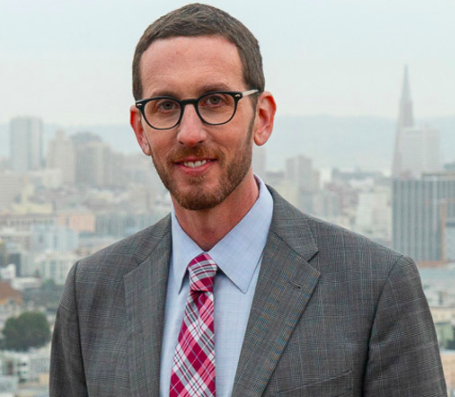The now-pending Senate Bill 9, authored by state Senator Scott Weiner and others, proffers opportunities for needed new housing development in the thousands of single family home neighborhoods of California, both urban and especially suburban.
In the abstract that is a good thing. It would enable construction, with SB9’s permitted lot split, of up to four new housing units on any single-home lot in the state. And to protect current residents from displacement, it excludes properties protected by rent control or other factors.

But there are no affordability requirements for the new units – all can be market rents/prices. SB9’s Yimby/Gentry proponents believe that over the long term, the “filtering” (aka, “trickle down”) impacts of the resulting increased overall housing supply in these neighborhoods will work to reduce rents/prices there too.
Perhaps. But until that may happen in the long-term – 20 years? – in the near term the immediate result if SB9 passes as now written will be a BIG jump in the value/price of ALL the single-family home properties where this new development potential might be used. In the high-cost Bay Area, SB9’s passage will add at least $100,000 to the price of any feasible house/lot. And most such homes in San Francisco could see jumps from $200,000 to $400,000 (view lots, etc.).
There is no way that instant price jump in home prices is a Good Thing. It will put even more housing units financially out of the reach of today’s hopeful home buyers. And it will make those properties even more attractive to “investors” (aka “flippers”) looking to exploit the State’s housing crisis for their own personal profits.
Those are Bad Things.
How does that work? The simplest example is an existing home located on a lot big enough for two homes. If SB9 passes, that extra space on that lot will then have the same value as any vacant lot the same size in the same neighborhood. So add that amount to the former value/price of the existing home, and that is the new higher price for that house.
And if the property has enough room for three new homes – unlikely but possible, especially in in the ‘exurbs’ – add the value of three such vacant lots to its price.
Tear down/rebuild scenarios are more complex. It would only make financial sense to tear down an existing house if the land value for two vacant lots in that location is more than the existing house is worth itself. This could apply if that house was very small or run down in bad condition in any city. Or if the property is in a luxury neighborhood, like Ross in Marin. Or if the property had spectacular views, like Twin Peaks in the City.
But a tear down/rebuild scenario is much more feasible if the home lot is big enough for four new units after a lot split as allowed by SB9. And single homes with lots that size can often be found in older urban neighborhoods, like East Oakland.
The tear down/rebuild scenario where possible will be very attractive to ‘flippers’ (they call themselves “investors”) looking to make a pretty quick profit. They don’t build new housing themselves. Instead they will put together deals with a smallish developers that focus on small projects like a fourplex. Most will be condos for sale, and even if not, they will be mapped as a subdivision for future conversion to condos without any further local approvals.
There is no way the rent/sales price needed to finance such housing is going to be “affordable” to renters/buyers with incomes less than 120 percent to 150 percent of local medians. Instead, the land price always pushes overall total development costs up to the levels “that the market will bear” for that location – that is how market capitalism works.
Which means most current residents of lower-income neighborhoods won’t be able to afford the new housing that SB9 would make possible to build in their own communities. Instead, the new residents of those projects moving into those largely immigrant/people of color central city neighborhoods will be higher paid younger professionals, much like the bill’s Yimby/Gentry proponents.
And that demographic shift in turn will reinforce and accelerate all the other social and economic pressures for the gentrification of these communities.
But that doesn’t have to happen. There are two straightforward ways to amend SB9 and avoid those negative consequences:
First, the vulnerable urban neighborhoods at risk of gentrification and displacement of lower-income and minority/immigrant residents could simply be cut out of SB9 geographically. They are now referred to as “Communities of Concern” by regional planning agencies, like the Bay Area’s Association of Bay Area Governments, and many have been identified and mapped already.
Second, SB9 could require that, when its lot split provision is used to build three or four new units in a single-family home district, one of those units must be affordable at least to middle income renters/buyers with incomes up to 150 percent of local median. That will assure there is no possible loss of existing affordable homes as a result of the existing house being torn down. And it will provide new housing opportunities for the so-called “missing middle” households that cannot qualify for subsidized affordable housing yet also cannot pay market rents/prices either.
And that requirement would also have the very beneficial effect of neutralizing some of SB9’s inflationary impact on existing home prices described above. Developers could still make a profit on the new housing, but they would not pay extra anymore just for sites big enough for a lot split.
These are Good Things.
If SB9 were amended with these provisions, BAFCA and other affordable housing advocates could support it.
John Elberling is a member of Build Affordable Faster California, a regional and state advocacy and action project of the Tenants and Owners Development Corporation (TODCO), a nonprofit community-based community development corporation in San Francisco’s South of Market Neighborhood (SoMa) since 1971.




